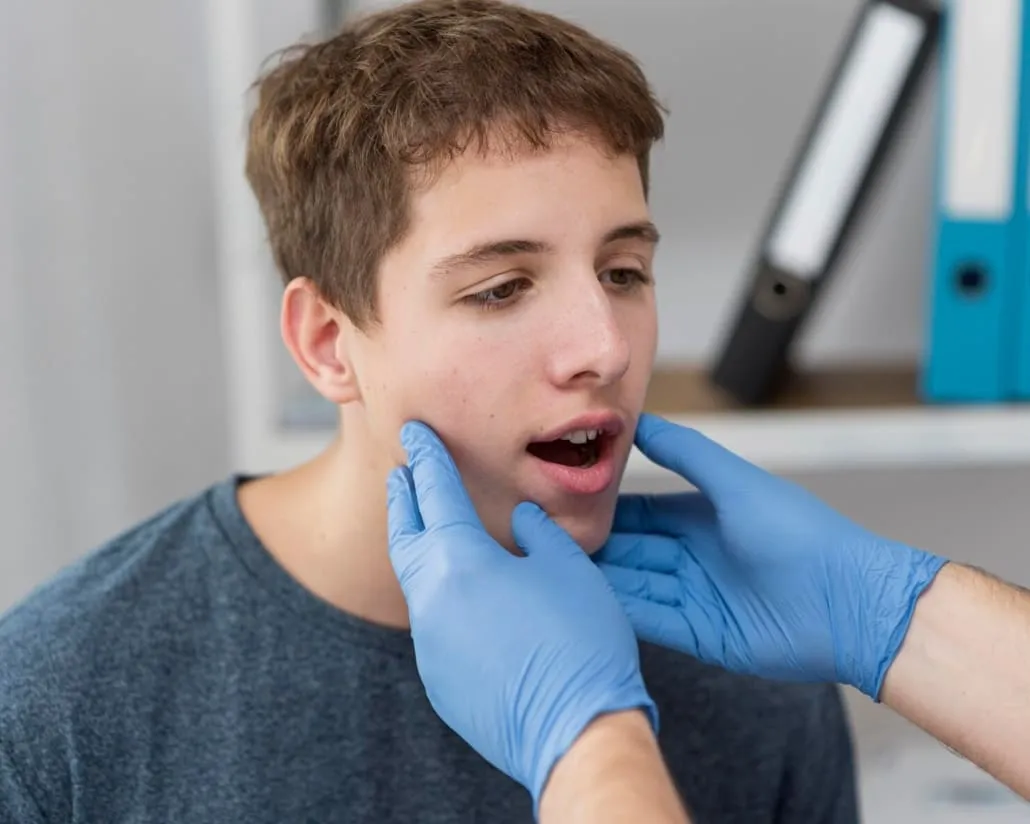Craniofacial Orthodontic Treatment and Care.
Those with traumatic injuries or congenital conditions often wish they could correct their deformities—many don’t realize they can. Craniofacial surgery, performed by specialists, can improve function, appearance, and overall quality of life while also addressing serious health risks. If you’re considering treatment, we’re here to guide you through the process and help you understand what to expect.


What Is a Craniofacial Disorder?
Craniofacial disorders are congenital conditions affecting the skull and facial bones, ranging from mild to severe. They’re most commonly seen in infants and children and are usually diagnosed within the first few weeks or months of life.
These anomalies can stem from various factors, including genetics, environmental exposures, and folic acid deficiency. A child may inherit certain genes, experience gene changes at conception, or be affected by substances the mother was exposed to during pregnancy. Lack of folic acid has also been linked to a higher risk of these conditions.
The Types Of Craniofacial Anomalies.
Craniofacial anomalies have symptoms that vary depending on the exact condition. The most common anomalies are cleft lips and palates, craniosynostosis, hemifacial microsomia, vascular malformation, and hemangioma; additional syndromes also affect the face, ears, eyes, or jaw. “Cleft” refers to a separation in the lip and palate, which could cause problems eating and speaking. Craniosynostosis is the premature closure of the soft spots in an infant’s skull, potentially leading to difficulties with speaking and communicating. Hemifacial microsomia is a condition in which the tissues on one side of the face are underdeveloped, causing an inability to chew. Vascular malformation refers to an abnormal growth composed of blood vessels. It could cause pain and problems with speech. Additionally, a hemangioma is a benign tumor that causes a red birthmark but does not cause pain or other symptoms.
Apert Syndrome
Characterized by an abnormal head shape, small upper jaw, and fusion of the fingers and toes.
Brachycephaly & Oxycephaly
Characterized by the disproportionate shortness of the head caused by a premature fusing of the coronal suture.
Crouzon Syndrome
Characterized by abnormalities in the skull and facial bones (Flat cheekbones and nose and short skull) caused by a fusing of both sides of the coronal suture.
Encephalocele
A condition characterized by a protrusion of the brain or its coverings through the skull.
Kleeblattschadel Syndrome
Kleeblattschadel can be detected by abnormalities of the skull and facial bones caused by a premature fusing of almost all fibrous sutures.
Craniofacial Dysplasia.
Craniofacial dysplasia, also called craniofacial fibrous dysplasia, is a rare bone disease that causes the bones and face of the skull to soften and deform. It’s closely related to fibrous dysplasia, which affects any bone in the body, most likely the long bones in the legs and arms. It commonly appears in childhood between the ages of three and 15; boys are more often diagnosed than girls. Craniofacial dysplasia may cause facial features to shift or other symptoms such as:
- Facial asymmetry
- Misaligned teeth
- Vision and hearing changes
- Congestion
- Pain or numbness
- Bone weakness in other body parts


Craniofacial Treatment Process.
Craniofacial dysplasia, or craniofacial fibrous dysplasia, is a rare bone disorder that causes the bones of the skull and face to soften and deform. It’s a form of fibrous dysplasia, which can affect any bone but often targets the long bones in the arms and legs. Typically diagnosed in children between the ages of 3 and 15, it’s more common in boys. Symptoms may include shifting facial features and other physical changes, such as:
- Facial asymmetry
- Misaligned teeth
- Vision and hearing changes
- Congestion
- Pain or numbness
- Bone weakness in other body parts
Craniofacial Treatment Process.
Craniofacial treatment is tailored to each person and often involves multiple surgeries to correct deformities, especially after trauma or tumor removal. Craniofacial orthodontics supports patients with congenital or injury-related anomalies, using a team approach. Orthodontists handle jaw and teeth alignment before and after surgery. Treatment aims to restore function and appearance through personalized surgical and orthodontic care.
Presurgical Nasoalveolar Molding (PNAM)
Reshapes the cleft lip and nose before surgical repair using custom-made appliances to approximate the lip segments and reshape the nasal cartilages gradually.
Palatal Expansion
Gradually widens the upper jaw, improving occlusion and overall function.
Orthodontic Alignment
Uses traditional braces or clear aligners for comprehensive orthodontic alignment, promoting proper function, dental health, and aesthetic harmony.
Orthognathic Surgery
It may be necessary to correct jaw imbalances or other skeletal discrepancies.
Craniofacial Treatment In Atlanta.
If you’re seeking craniofacial orthodontic care in Atlanta, Atlanta Orthodontic Specialists is the trusted choice. Our expert team provides comprehensive evaluations and personalized treatment plans, often offering early interventions that lead to better outcomes and long-term results.
We work closely with other medical professionals to ensure every aspect of your care is covered—from treatment to recovery. Even after your procedure, we stay involved to support ongoing progress in function and appearance.
With unmatched clinical experience and cutting-edge technologies like SureSmile® and INVISALIGN®, our doctors lead the way in orthodontic innovation. Visit us and see why so many patients trust AOS for life-changing craniofacial care.

Get Your Free Consultation.
Start the journey toward a straighter smile today!